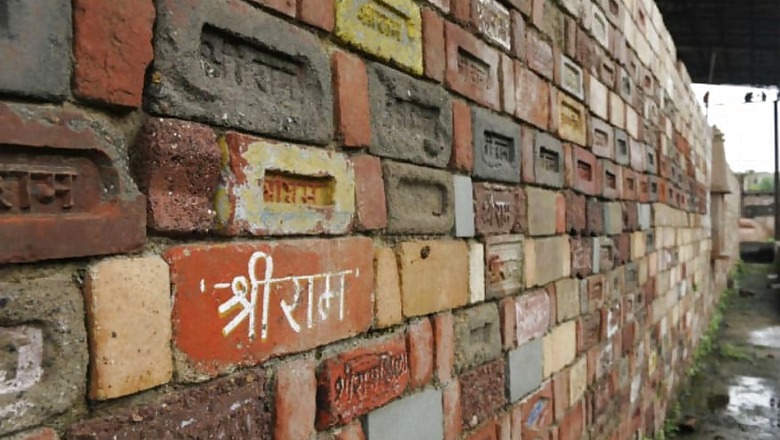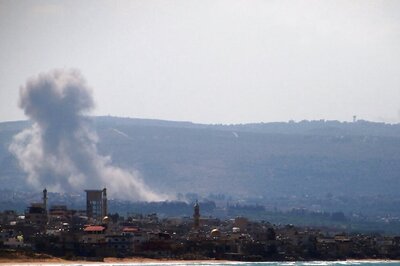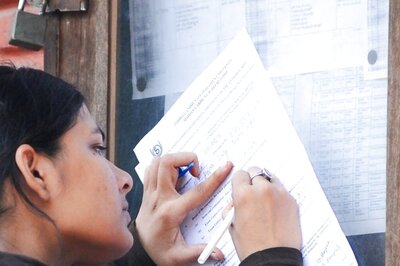
views
Jaipur: The disputed land in Ayodhya will be given to a government-run trust for the building a temple and Muslims will be given a five-acre "suitable" plot in the town, the Supreme Court ruled on Saturday in a landmark verdict that has been a religious and political flashpoint in the country for decades. A five-judge constitution bench delivered a unanimous verdict.
Ahead of the ruling, tight security had been placed in Rajasthan, the state which has been providing all the stones and marbles towards the construction of Ram Mandir.
Early on Saturday morning, all schools and colleges were ordered to remain shut till Monday. Section 144 was placed in nearly ten districts including Jaipur, Bhilwara, Kota, and Bharatpur.
Sources in the administration say that one lakh policemen in sensitive locations have been put on high alert. Officials are monitoring ground situation through nearly 4,000 CCTV cameras and drones.
Of all the districts, however, it is Bharatpur, from where all the stones for constructing Ram Mandir have been extracted and cut over the last 30 years, which remains the focus for the administration.
White and pink sandstone from Bharatpur's Bansi Pahadpur area have been extracted over the last 30 years and brought to Ayodhya to be cut and carved. The sandstones of Bansi Pahadpur, famed throughout the country, were used in the construction of some of the grandest and iconic structures of India — Parliament, Rashtrapati Bhawan, Lal Quila, Buland Darwaza.
People involved in the excavation of the sandstone say that stones excavated from this site were preferred over others from the country for three main reasons.
First, the mines in Bansi Pahadpur yield intact stones of mammoth sizes. So workers can use one single slab of excavated stone to carve out a pillar of the proposed temple. The second reason is that the stone, which has been used in many grand buildings, is famed for never losing its colour. Thirdly, these stones are believed to possess great strength and those involved in the construction work on Ram Mandir believe that these stones will last at least a thousand years.
The mines of Bansi Pahadpur are believed to have been selected some 30 years ago by Ashok Singhal, who was VHP's international working president and in-charge of the Ram Janmabhoomi movement, and another senior VHP Acharya Giriaj Kishore who was also involved in the Ram Janmabhoomi movement.
Initially it was in a workshop in Pindwara, in Sirohi district of Rajasthan, where the stones excavated from the mines of Bansi Pahadpur were cut and carved. However, some years later the workshop was shut down and the stones were sent directly to Ayodhya to be worked upon by a number of artisans.
Of a total of 1.75 lakh sq feet of the two-storied proposed temple, people involved in the excavation and construction of the temple say stones for nearly 1 lakh sq ft have already been dug up and worked upon. So 65-70% of the work is believed to have been finished.
It is not just the sandstones of Bansi Pahadpur that will be used in the construction of the temple. Work has also been going for over a decade in Makrana whose marbles will be used in laying the floorwork of the proposed temple. Besides, artisans from Sikandara, in Dausa, will be used to carve out 'jaalis' for the facade.


















Comments
0 comment